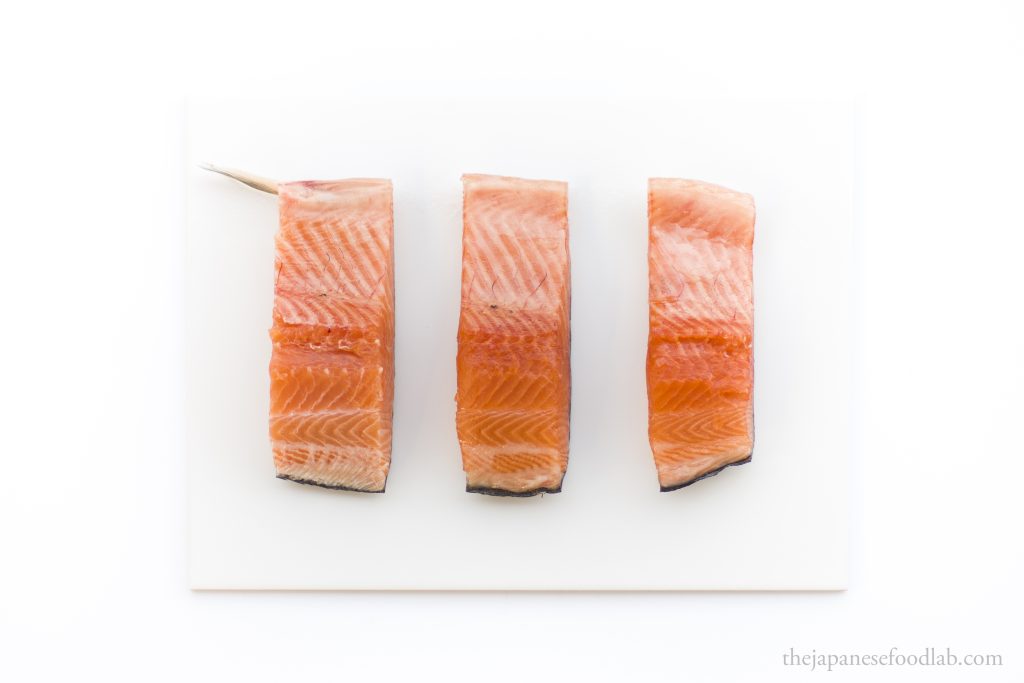This article is part of our series on other kinds of bushi. We recommend reading our article on how katsuobushi is made, how it is shaved, the different parts of katsuobushi and the different kinds of katsuobushi to better understand the terminology used here.

Known for its high fat content, salmon would most likely be one of the least expected fish to be made into bushi. However, the story behind sakebushi is one of utilizing a resource that would otherwise go to waste.
Today, the majority of salmon sold at supermarkets in the English speaking world are grown in open-net pen farms. Therefore, the salmon that appears on most people’s dinner tables are salmon harvested in prime condition, when they are most flavourful with just the right amount of fat.
However, salmon are actually anadromous fish. This means that whilst they spend the majority of their life in the ocean, they return to freshwater to spawn. In fact, many species of salmon die right after spawning, a phenomenon known as semelparity.
As salmon prepare to spawn, the energy in their body is used to develop their eggs and testes, resulting in a significant loss of fat as well as their flesh becoming white. These kind of salmon are known as bunasake (山毛欅毛/ブナサケ) and have a very low market value due to their bad tasty. Instead, these salmon are usually harvested to collect eggs to make ikura, or sent to farms to replenish their stock. The remaining flesh is then either discarded or used as fertilizer.

Once katsuobushi making technology became more widespread and developed. It wasn’t long before people realized that bunasake was actually the ideal type of fish for making bushi from as it already naturally had a low amount of fat.
Sakebushi (鮭節) is made using the same process as katsuobushi all the way to the arabushi stage. At this point, there is no sakebushi being fermented with mold to honkarebushi. The entire process takes around 50 days to complete given the cycles of smoking. It’s a fairly new product so it’s currently only sold as shaved flakes (削り節) as the production quantity is small.
The taste is surprisingly not very fishy, with only a hint of salmon flavor. It’s quite a similar profile to smoked salmon and we think of it as a fantastic pairing for ochazuke stock.